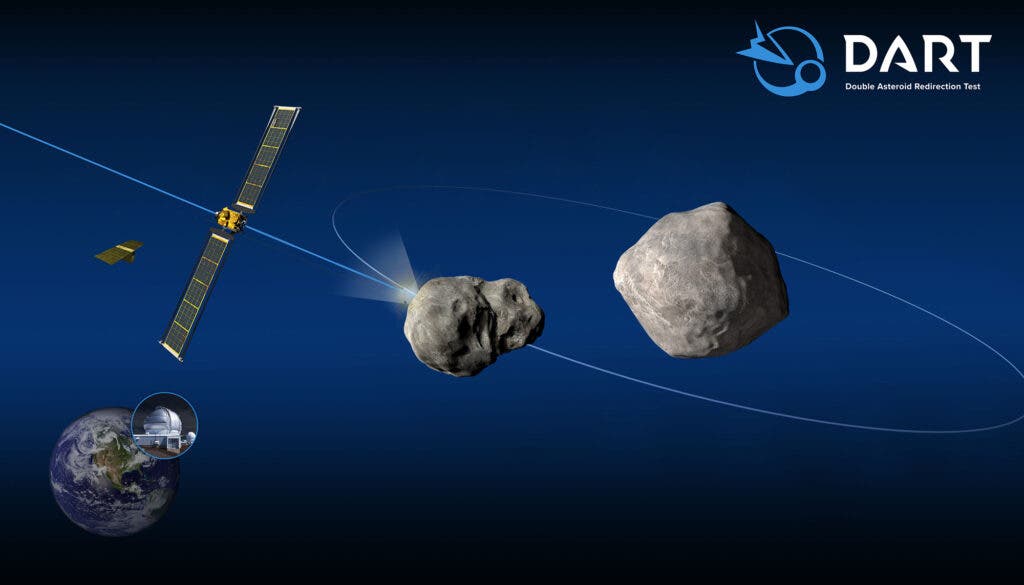
With all our day-to-day struggles, it’s easy to forget just how fragile all life on Earth really is. Our planet is essentially one giant rock zipping through nothingness, with only a thin blanket of atmosphere and magnetic fields separating us from total annihilation. What’s more, our blue rock isn’t alone. We’re surrounded by other smaller rocks called asteroids, some of which have trajectories dangerously bordering our own.
Of all existential threats, an asteroid impact seems the most distant — at least compared to climate change and nuclear war. But NASA is taking it very seriously, which is why next month it will be launching a spacecraft tasked with crashing into a pair of asteroids and changing their paths. The mission, called Double Asteroid Redirection Test (DART), is humanity’s first-ever test for a planetary defense method.
The launch is scheduled for November 24, when a SpaceX Falcon 9 rocket will take off from the Vandenberg Space Force Base in northwestern California. Once in orbit, the DART spacecraft will detach from the Falcon 9 and cruise through space for about a year until it encounters a pair of small asteroids — a larger one, known as Didymos, and its orbiting ‘moonlet’, called Dimorphos — that will come as close as 11 million kilometers from Earth at the time of the rendezvous.
These two asteroids pose no threat to Earth. The idea is to slam DART into Dimorphos with just enough energy to move it off course. It’s a test that will provide valuable lessons for when we need to avert a collision with an asteroid that may pose an actual threat. The entire interaction will be recorded by a small Italian satellite launching from the DART spacecraft and will be live-streamed on NASA TV.
“We’re going to make sure that a rock from space doesn’t send us back to the Stone Age,” Thomas Statler, a NASA scientist, said during a NASA podcast.
Didymos is about 800 meters (0.5 miles) in diameter, while the smaller Dimorphos measures just 150 meters (500 feet) across. NASA scientists chose Dimorphos as their target because these smaller asteroids are the most common and most likely to pose a significant threat to Earth.
By their calculations, NASA scientists estimate that the DART spacecraft will crash into Dimorphos at a speed of 24,000 km/h (15,000 mph). That’s enough energy to nudge its orbit by a fraction of one percent. That’s a small but very significant difference that adds up when you consider an orbit millions of kilometers across.

Sorry to break the news, but there will be no Armageddon-style nukes (not this time at least). Regardless, this will be one heck of an entertaining live stream. Be sure to bring popcorn.
“DART will be the first demonstration of the kinetic impactor technique, which involves sending one or more large, high-speed spacecraft into the path of an asteroid in space to change its motion,” NASA said.









